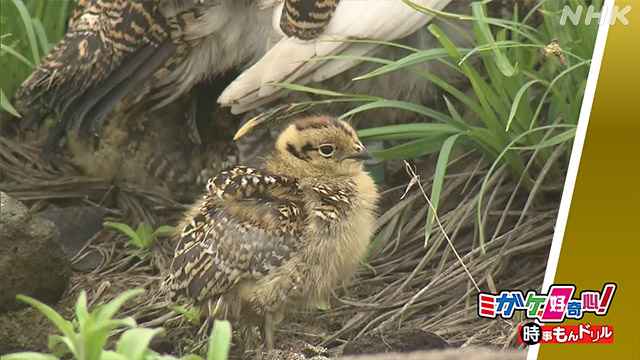Ptarmigan revival operation January 12, 13:41
The Japanese rock ptarmigan is a national special natural monument and is at high risk of extinction in the near future.
Restoration operations are underway in its former habitat.
Ptarmigans used to inhabit the Northern Alps, the Central Alps, the Southern Alps, and the surrounding mountains.
However, due to overfishing, changes in the environment, and the emergence of new natural enemies, ptarmigans have disappeared from the areas shown in red, such as the Central Alps.
The current population is estimated to be less than 2,000 birds.
The revival operation is an effort to succeed in breeding in the Central Alps.
With the arrival of a single female
We asked Professor Emeritus Hiroshi Nakamura of Shinshu University, who is directing the revival operation, how the operation started.
Mr. Nakamura:
“In 2018, a female ptarmigan flew to the Central Alps for the first time in about 50 years.
What should I do to increase this ptarmigan?
A single female will lay an egg, but the chick will not hatch because it is unfertilized.
Mr. Nakamura has been researching cuckoos for many years, so he got a hint from their ecology.
Cuckoos lay their eggs in other birds' nests and let them raise their chicks.
So he devised a plan to replace the grouse eggs with fertilized eggs and let the chicks grow.
In 2019, Mr. Nakamura brought the fertilized eggs collected at Mt. Norikura to the Central Alps.
The eggs were replaced when the female ptarmigan left the nest to feed.
When I visited about three weeks later, a chick was born.
However, 10 days later there was no chick.
The next year, 2020, the same method was used to successfully hatch the chicks, but when Japanese macaques approached, the chicks were frightened and left the nest and died.
Mr. Nakamura:
“In the past, there were no Japanese macaques, deer, or wild boars in high mountains. Recently, foxes, martens, and crows have been invading high mountains and preying on ptarmigans. It's crumbling."
Natural breeding for the first time in about 50 years
On the other hand, in 2019, I was also trying other methods of replacing eggs.
At Mt. Norikura, 19 ptarmigans and their parents were protected in cages to protect them from bad weather and natural predators.
I expected many chicks to hatch over the winter.
In 2021, the results have appeared.
8 survived and 46 chicks were born.
This is the first natural breeding in the Central Alps in about 50 years.
Efforts will continue.
This time, we moved the ptarmigans that naturally bred in the Central Alps to a zoo and bred them manually.
In 2022, 22 ptarmigans from the zoo's growing family were returned to the Central Alps.
Think about the balance of the ecosystem
It's been three years since the "Recovery Operation" started.
The number of ptarmigans in the Central Alps has increased to 120.
Mr. Nakamura:
“My ultimate goal is to increase the number of ptarmigans to 300, a population that can be maintained without human intervention. Because of the infestation of plants, it is becoming difficult to obtain plants, which are the natural food for ptarmigans, so we have started a project to remove them.The most important point when considering nature conservation is how to maintain the balance of nature itself.”
In order to conserve the increased number of ptarmigans, it is necessary to consider the restoration of the habitat environment and the balance of the ecosystem.
Challenge the problem!
Finally, there is an entrance exam question about ptarmigan.
In summer, the ptarmigan's plumage is mottled with a mixture of brown, black and white.
In winter, it turns white.
Question
Which of the following is the correct reason why the ptarmigan's plumage is white?
Choose one from the following a to e and answer with symbols.
(a) To reflect light well and dazzle the eyes of natural enemies.
B. To form a group and make the body look bigger.
C. To efficiently obtain heat from the sun.
To hide from predators by hiding in the landscape around her.
(Johoku Junior High School 2016 Science Retitled)
The correct answer is "e".
It seems that they have successfully integrated into their environment to protect themselves from wild animals that would try to eat them.
In "Migake, curiosity!" of "Weekly Maruwaki News" (broadcast at 8:25 am on Sundays), we delve into the news every week on topics such as current affairs presented in the entrance exam.
Let's think together about "why?"
On the corner homepage, you can also review the past.
Please take a look at the link below.
https://www3.nhk.or.jp/news/special/maruwaka-migake/

